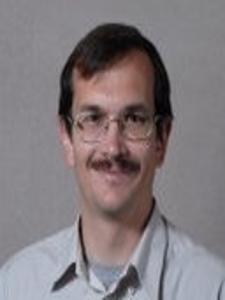OSE Seminar with Dr. Vitaly Gruzdev on Laser-driven electronic processes in condensed matter: from controlled modification of a single biomolecule to controlled enhancement of laser ablation
Departmental News

Posted: May 21, 2018
Date: Wednesday, May 23, 2018
Time: 11:00 AM to Noon
Location: P&A, Room 190
Map to P&A:
http://physics.unm.edu/findpanda/
Abstract:
Liquids and solids that are transparent to low-intensity laser radiation can affectively absorb and transfer energy of laser pulses only via nonlinear excitation of their electron sub-system, e.g., multiphoton absorption. However, the valence electrons of the liquids and solids intensively interact with other particles of those quantum systems and also follow specific symmetry in case if the solids are crystalline. Those features of the electron sub-system represent a significant challenge for theoretical and experimental studies. For example, they support two competing types of laser-driven electron dynamics: collision-dominated chaotic dynamics if the electron-particle interactions dominate or coherent laser-driven oscillations in energy-momentum space if electron-laser interactions dominate. In each specific case, one or the other type of the dynamics makes a major contribution to energy transfer from laser pulses to condensed matter. In a majority of considerations, it made a guess regarding what type of the dynamics dominates. However, some specific properties of the electron sub-system of the condensed matter suggest very non-trivial approaches to control laser-solid interaction and laser-molecule coupling in liquids. Those features can be utilized as qualitative benchmarks to identify a dominating type of the laser-driven electron dynamics and mechanisms of energy absorption and transfer. In this talk, three examples of the specific laser interactions with electron sub-systems are overviewed. The first one considers enhancement of ultraviolet nanosecond laser ablation of semiconductors in axial magnetic field. While multi-pulse effects can be interpreted in terms of specific debris deposition, the most non-trivial effect is the enhancement of ablation by a single pulse. It can be interpreted in terms of specific magneto-absorption effects rather than ablation-plasma confinement. The second example considers a specific interplay between crystal symmetry and action of ultrashort laser pulses. Small duration of the laser pulses suggest domination of the laser-driven coherent electron oscillations in the laser-electron interactions. Theoretical analysis of those oscillations suggests strong and non-trivial dependence of the total free-carrier yield per pulse on crystal symmetry and value of carrier-envelope phase. Finally, ultrafast laser modification of biomolecules in polar liquids is considered from the viewpoint of non-trivial non-coherent control of the modification. It is shown that highly controlled, high-throughput, and very reproducible biomolecule modification is feasible in room-temperature liquids enriched with air oxygen. In all cases, the specific contribution of laser-electron interactions is emphasized, and applications of those fundamental effects are outlined.
Speaker's Bio:
Dr. Vitaly Gruzdev is an Assistant Research Professor in the Department of Mechanical & Aerospace Engineering, University of Missouri in Columbia, MO. His research interests are in the field of theoretical and experimental studies as well as numerical simulations of laser-driven electronic processes in condensed matter. The major focus of his research is on ultrafast laser-induced nonlinear absorption, generation of free carriers, heating the free carriers, photoemission, and energy transfer in dielectrics and semiconductors transparent to laser light at low intensity. He has received research funding from NSF and AFOSR. He is a Co-Chair of Annual SPIE Laser Damage Symposium and an Associate Editor of Optical Engineering. His has over 100 papers published in peer-reviewed journals and proceedings of international conferences. He also holds 1 US patent on thin-disk lasers. Dr. Gruzdev received his MS degree from Institute of Fine Mechanics and Optics in St. Petersburg, Russia in 1994. He got his Ph.D. from Federal Research Center “S. I. Vavilov State Optical Institute” in St. Petersburg, Russia in 2000.
